Beetlejuise Horror Movie Poster Wall Art & Canvas Prints
Beetlejuise Horror Movie Poster Wall Art & Canvas Prints
Couldn't load pickup availability
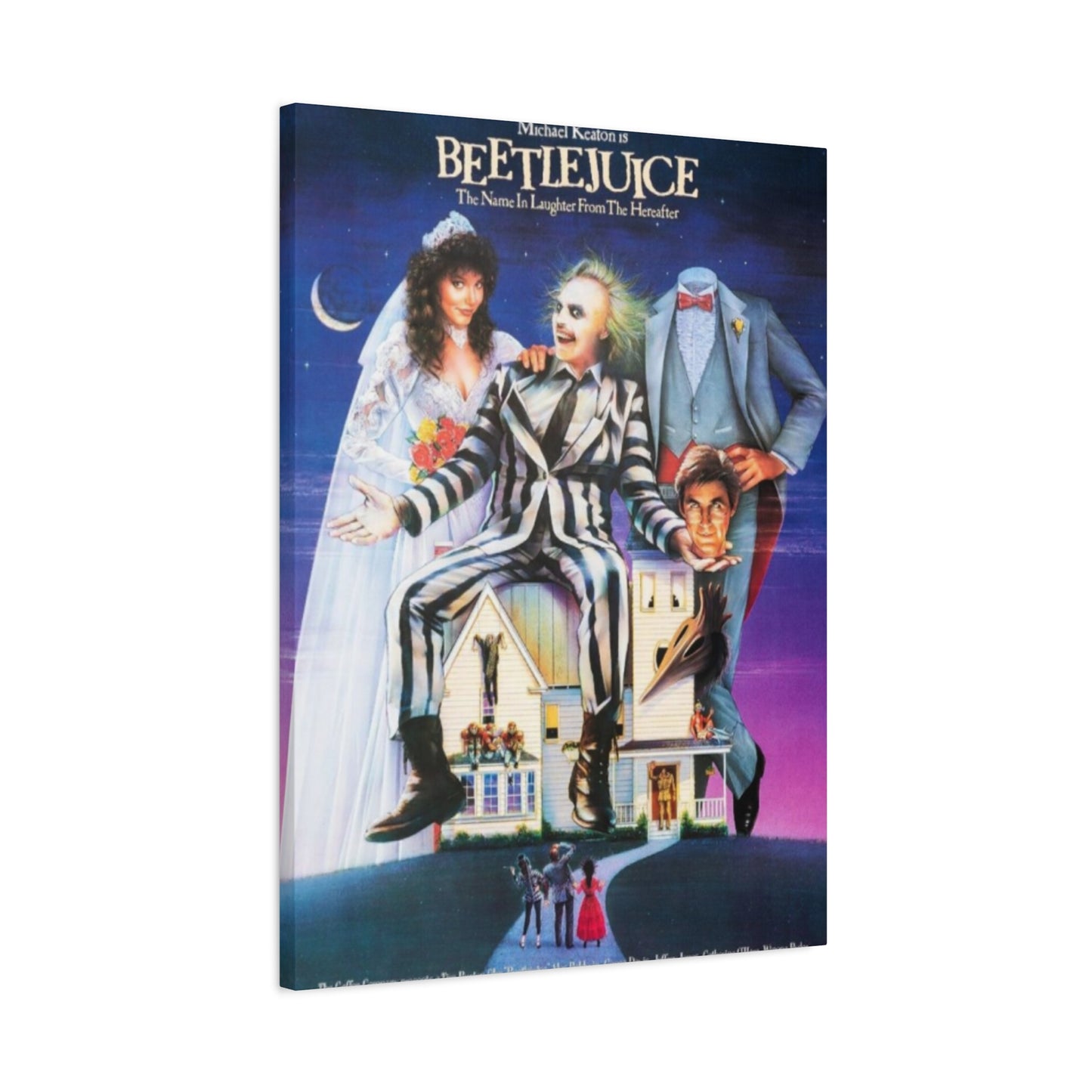
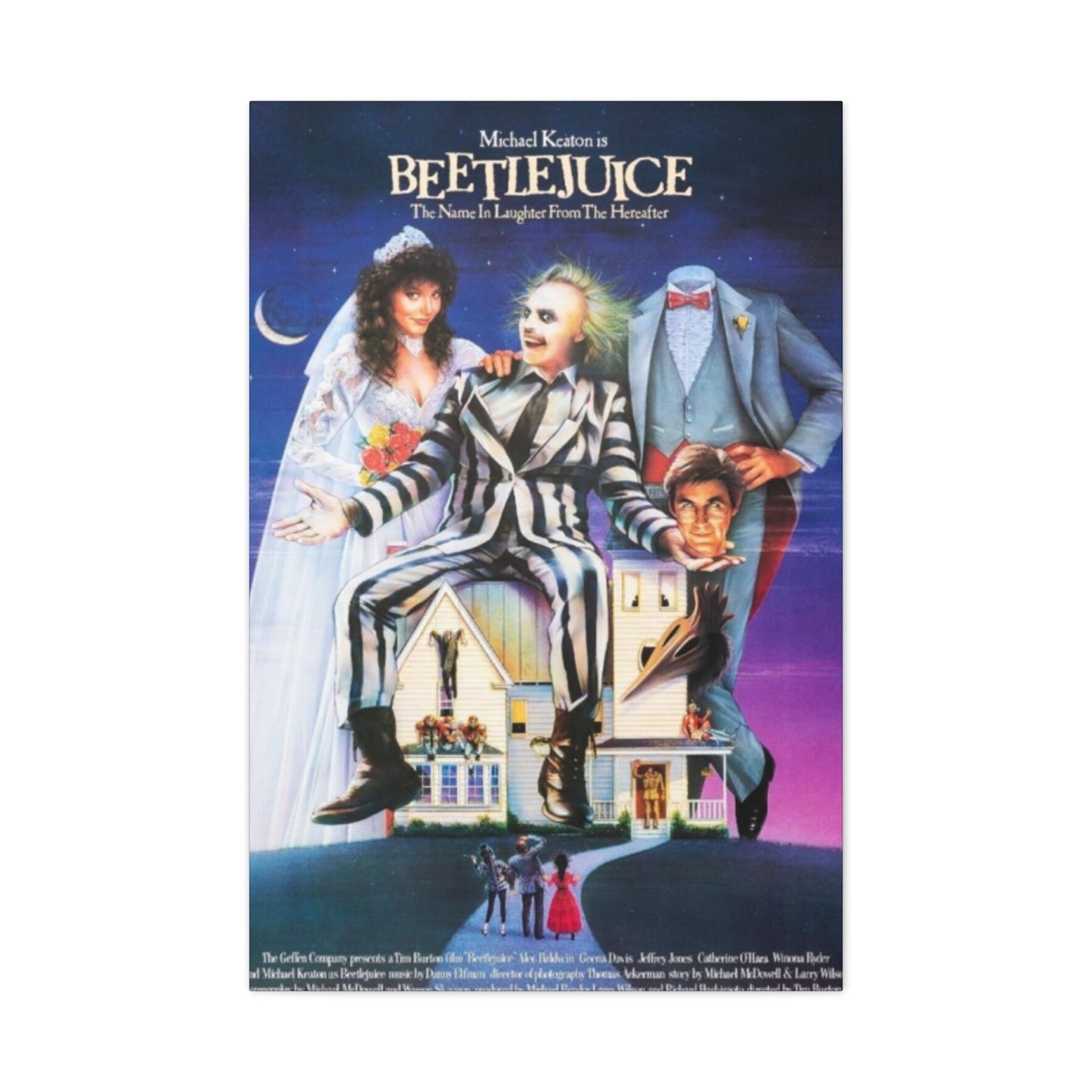

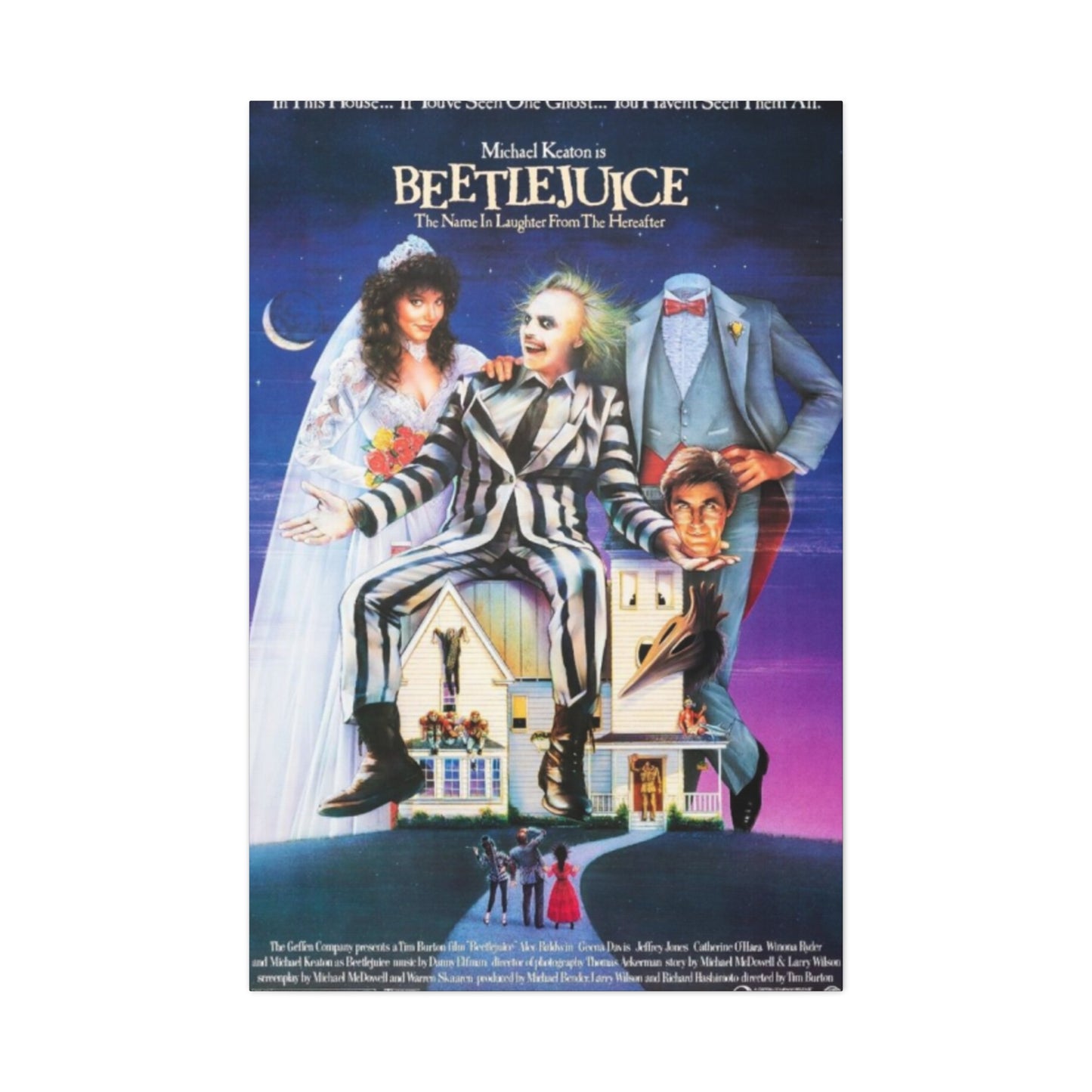
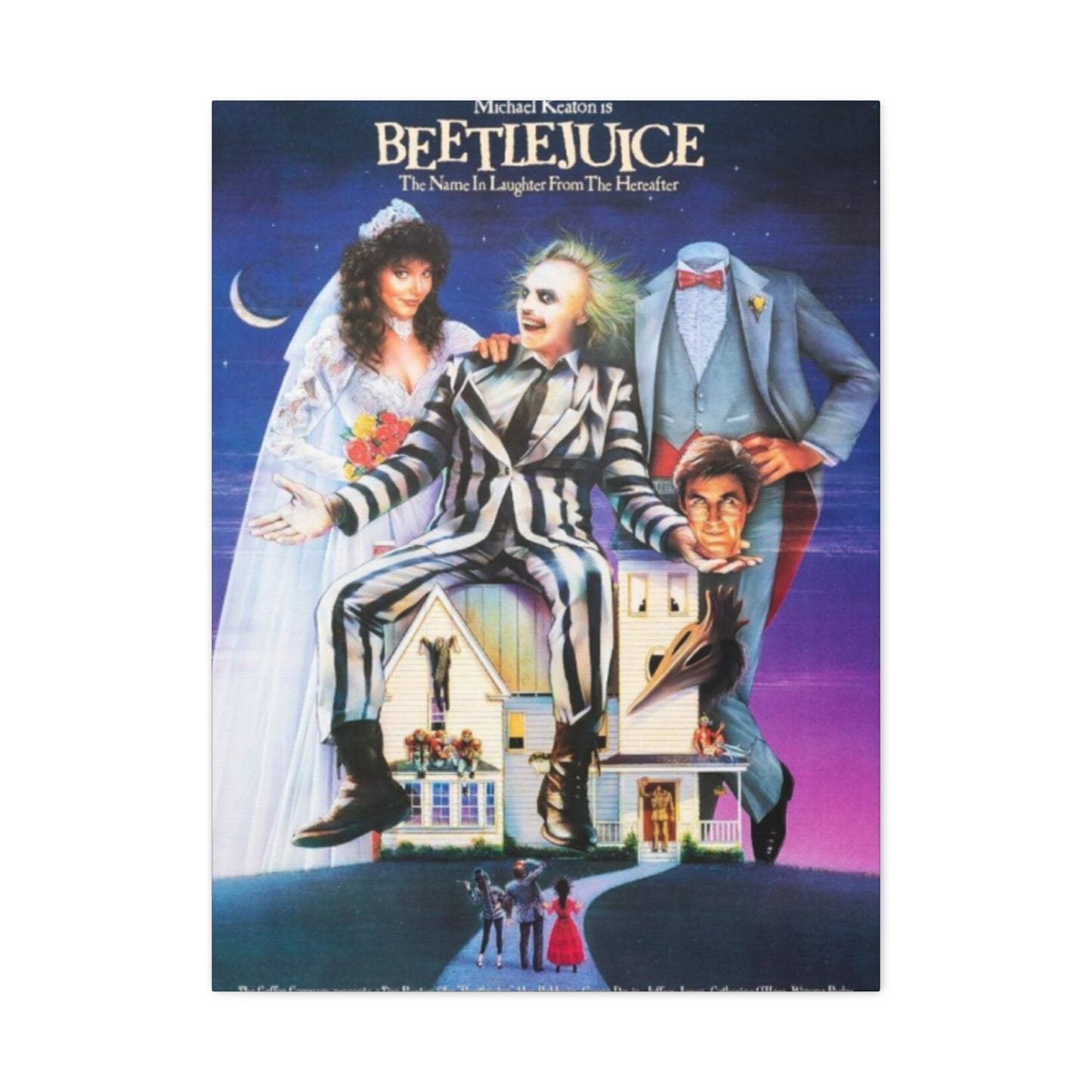

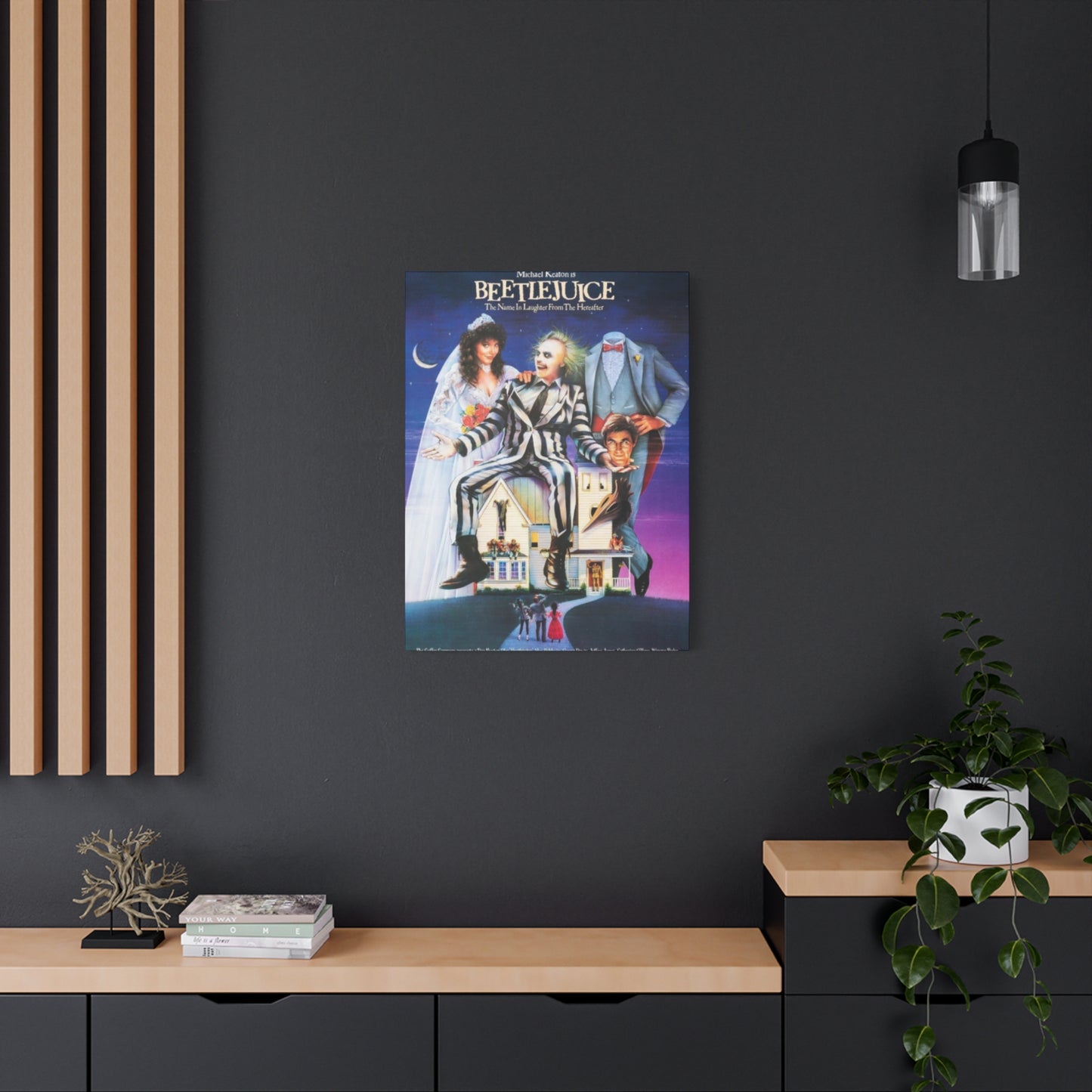
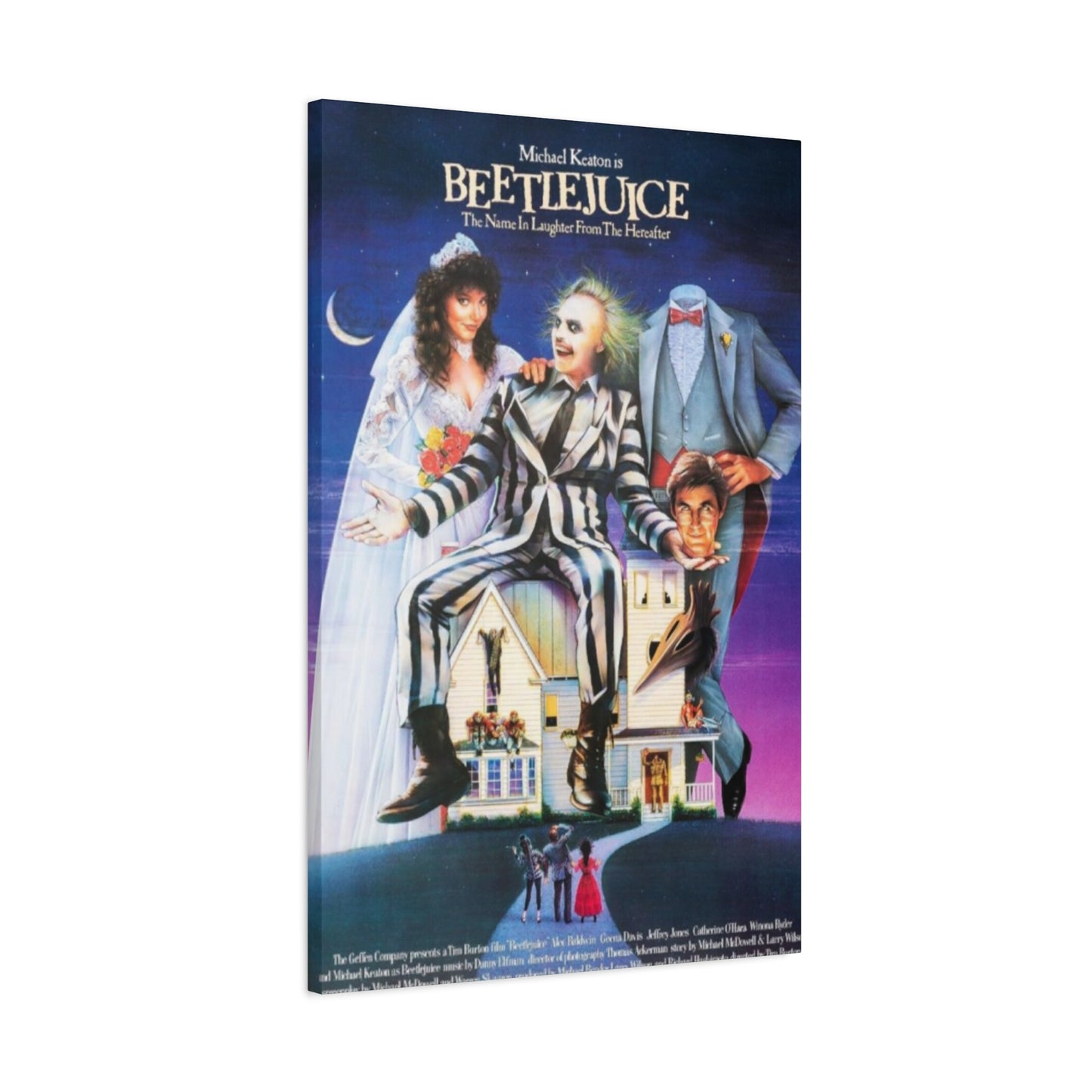
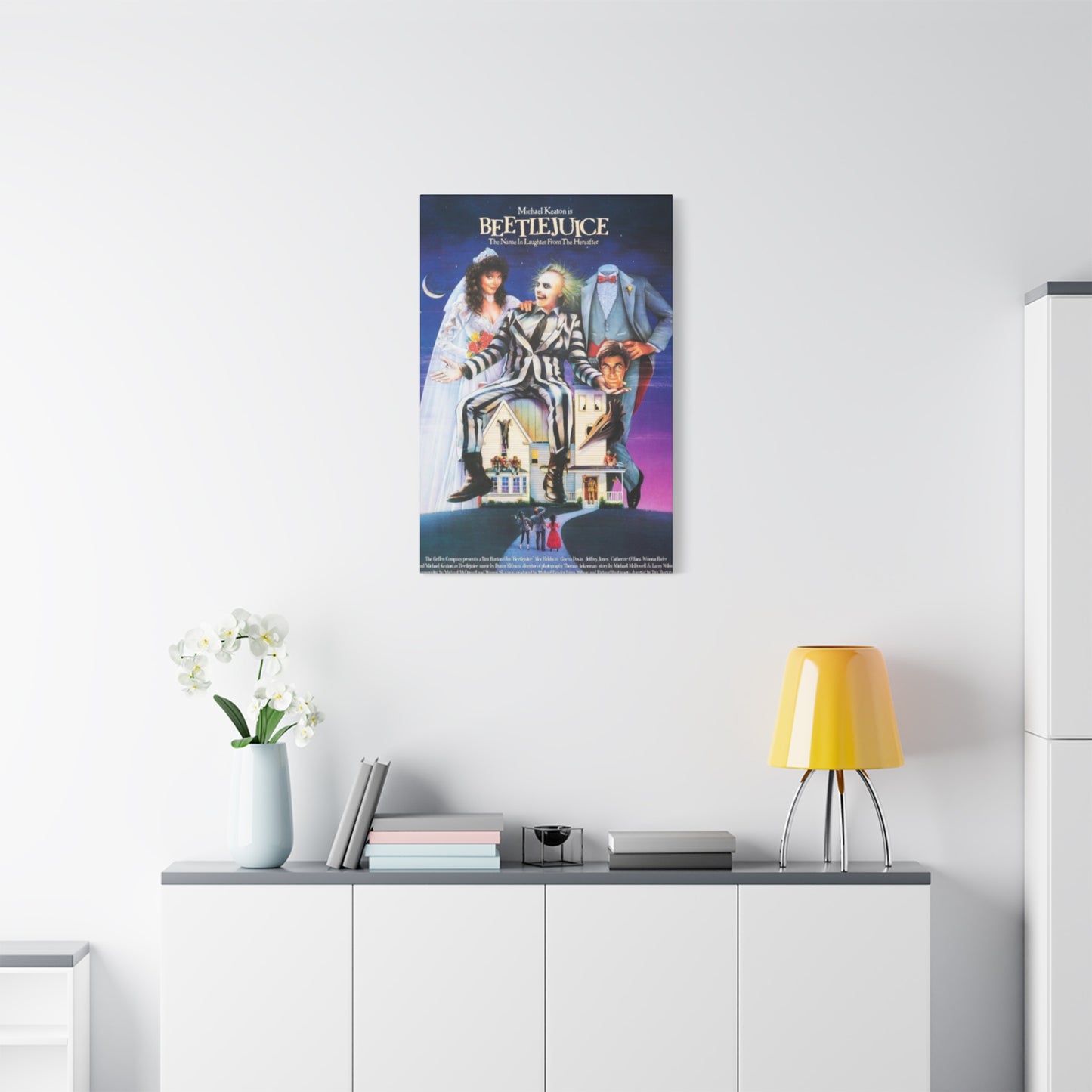
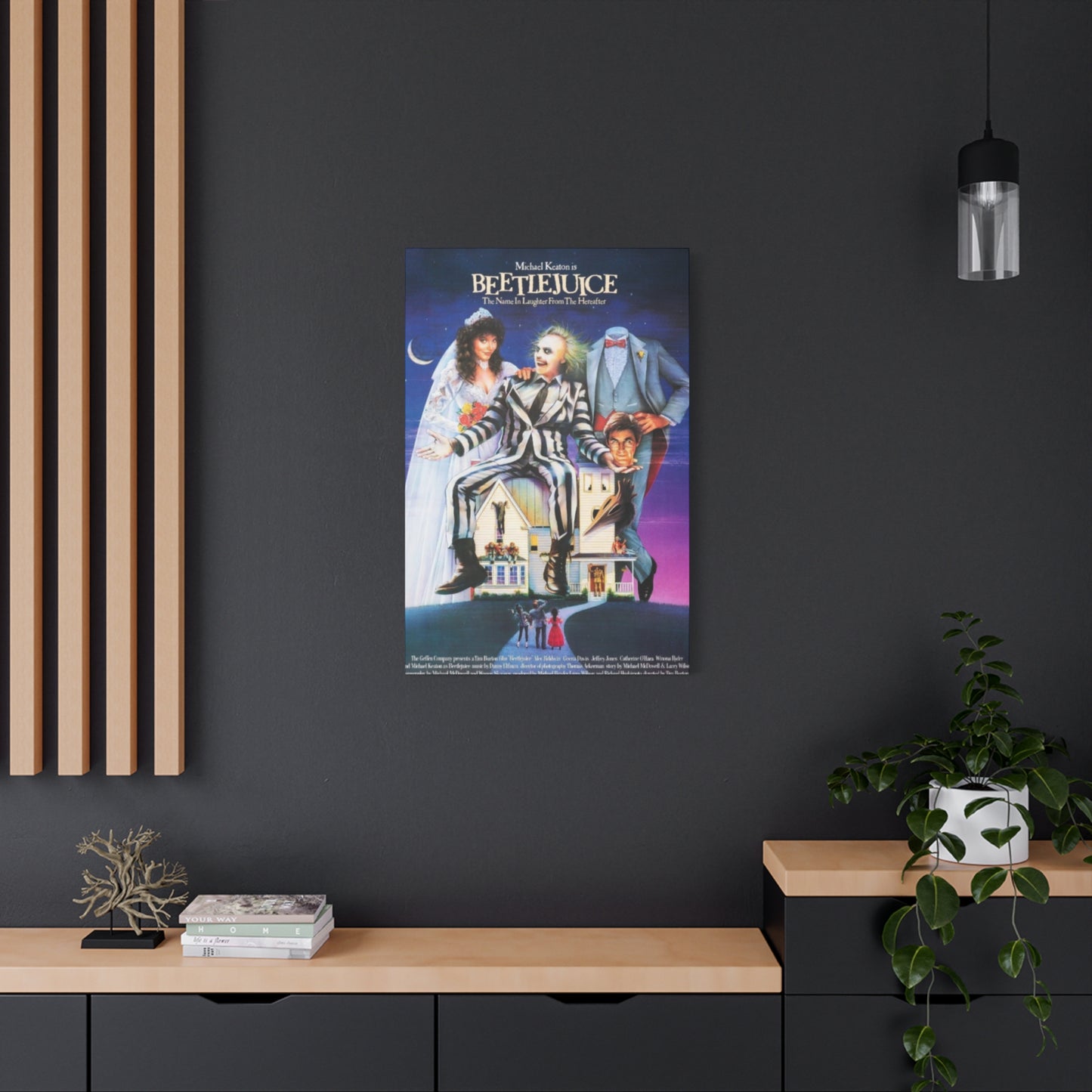
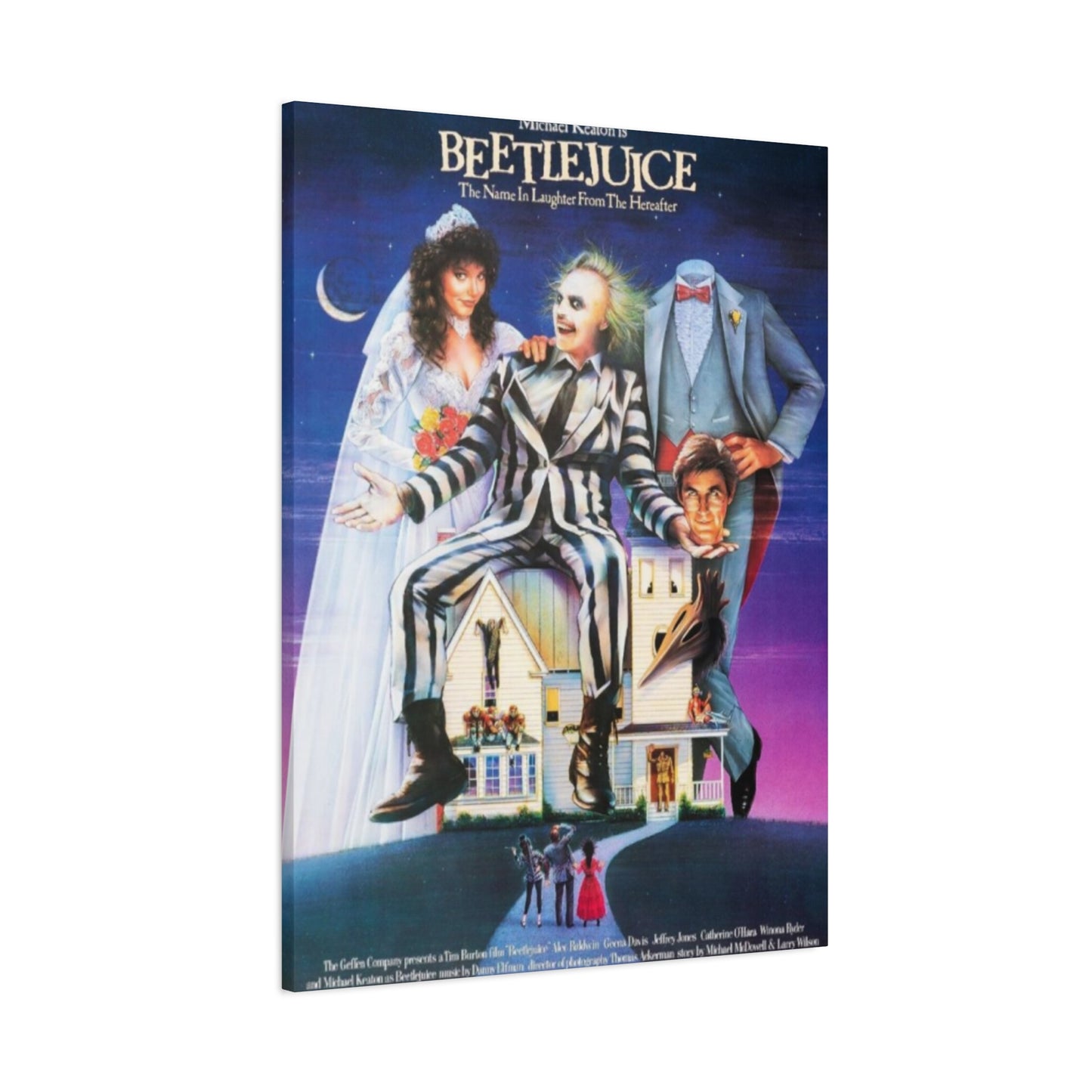

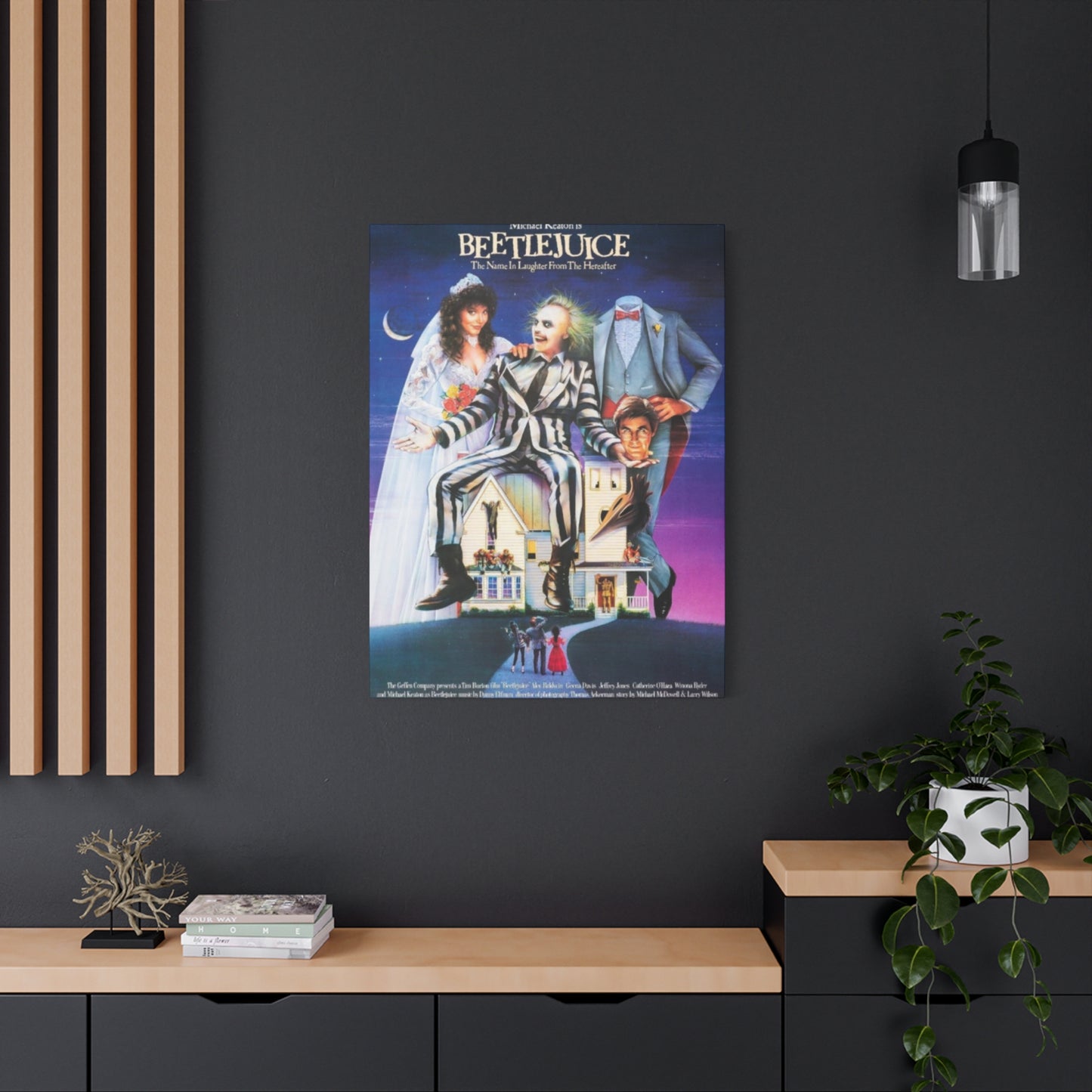
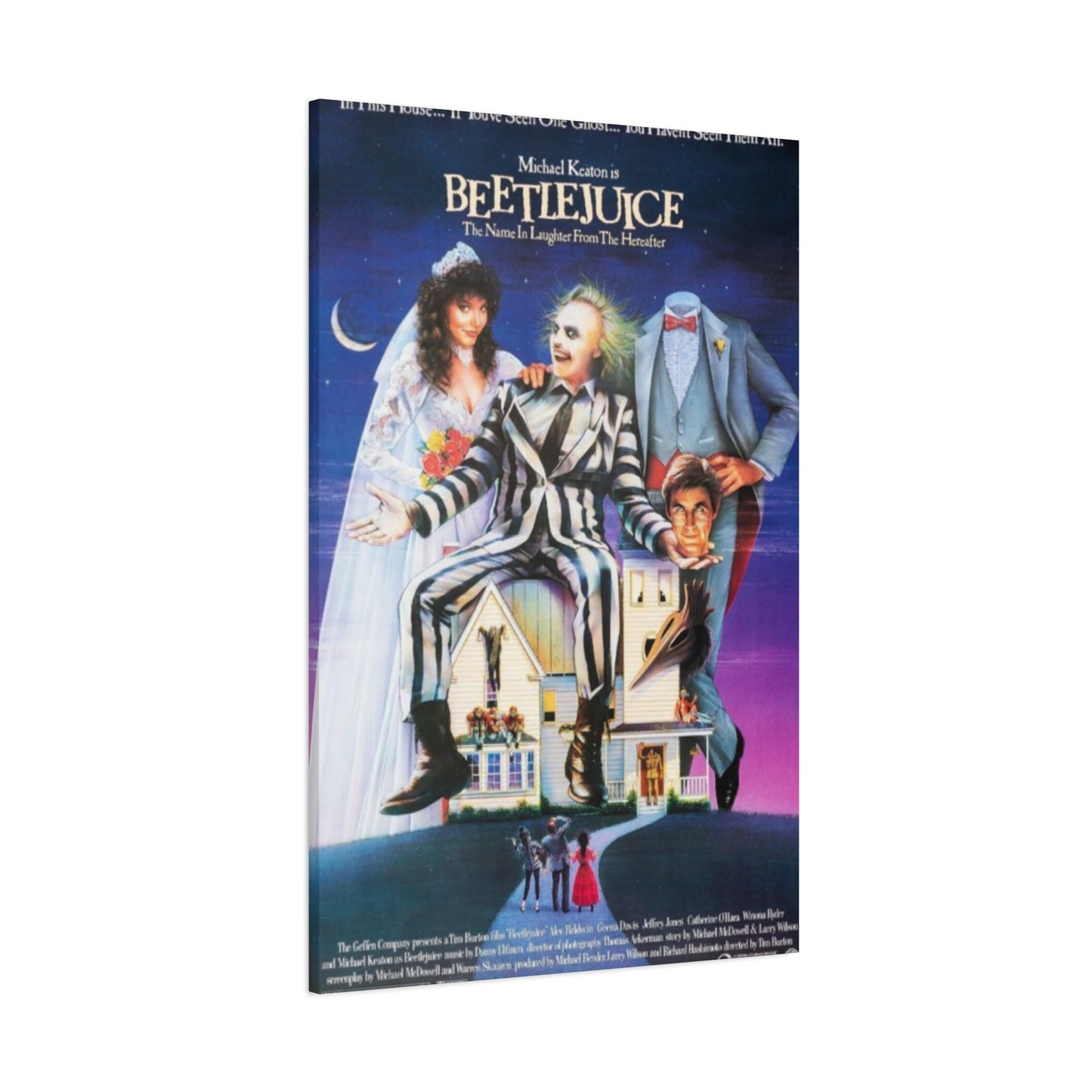

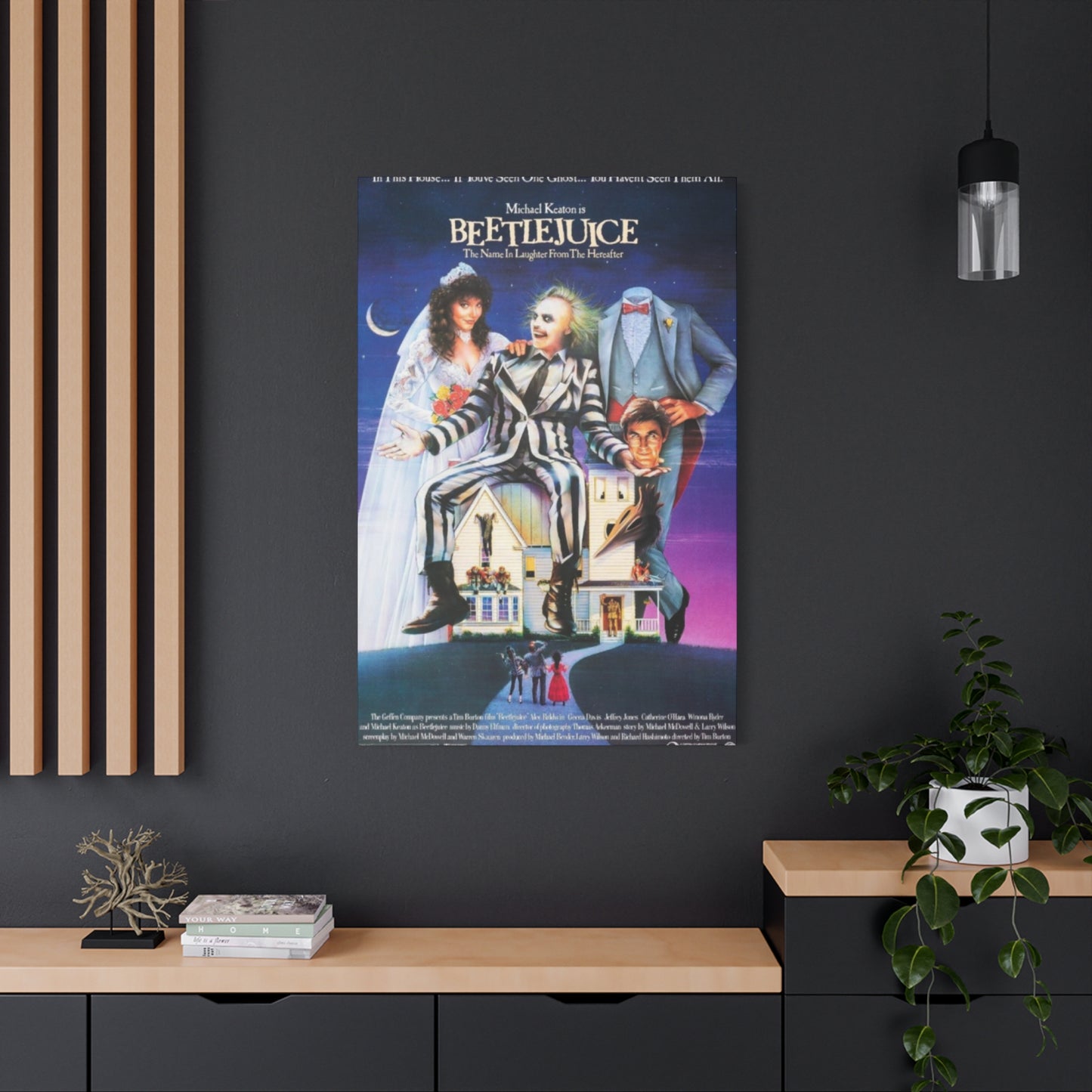
Beetlejuice Poster Wall Art: Creating Iconic Horror-Comedy Displays for Every Space
The world of cinematic art has produced countless memorable images, but few have captured the imagination quite like the distinctive visual elements found in Tim Burton's supernatural comedy masterpiece. These striking poster designs have transcended their original promotional purpose to become beloved pieces of collectible artwork that horror enthusiasts and comedy fans alike treasure in their personal spaces.
The enduring appeal of these theatrical promotional materials lies in their ability to perfectly encapsulate the film's unique blend of macabre humor and gothic whimsy. Each design serves as a portal into Burton's twisted yet charming universe, where the boundaries between life and death blur in the most entertaining ways possible. The visual storytelling found in these promotional pieces continues to resonate with audiences decades after the film's initial release, making them highly sought-after decorative elements for homes, offices, and entertainment spaces.
Modern collectors and casual fans have discovered that incorporating these iconic images into their interior design schemes creates an instantly recognizable focal point that sparks conversation and showcases their appreciation for innovative filmmaking. The diverse range of artistic styles represented across different promotional campaigns means that enthusiasts can find pieces that complement virtually any aesthetic, from minimalist modern spaces to elaborate gothic revival rooms.
The cultural impact of these poster designs extends far beyond their original marketing function. They have become symbols of a generation's relationship with alternative entertainment, representing a time when mainstream Hollywood embraced truly unconventional storytelling approaches. This cultural significance has only grown stronger over time, as new generations discover the film and its associated artwork through streaming platforms and revival screenings.
Premium Poster Selections for Dedicated Horror Cinema Fans
The most discerning horror movie enthusiasts understand that selecting the right poster artwork requires careful consideration of both artistic merit and cultural significance. The finest examples of this particular film's promotional materials feature striking compositions that immediately communicate the movie's distinctive tone while showcasing the exceptional character design work that made the film so visually memorable.
Professional collectors often gravitate toward first-run theatrical posters, which were produced specifically for cinema lobby displays during the film's initial release period. These original promotional pieces typically feature the highest quality printing techniques available at the time, resulting in rich color saturation and crisp detail reproduction that modern reprints often struggle to match. The paper stock used for these authentic pieces was specifically chosen for durability in high-traffic theater environments, making surviving examples particularly robust despite their age.
International poster variations present another fascinating collecting opportunity for serious enthusiasts. Different markets around the world received unique promotional artwork that reflected local artistic sensibilities while maintaining the core visual identity of the film. Japanese promotional materials, for instance, often featured distinctive manga-inspired interpretations of the main characters, while European versions sometimes emphasized different aspects of the story's gothic elements.
The artistic techniques employed in creating these promotional materials showcase the evolution of poster design during the late 1980s. Many featured hand-painted elements combined with photographic components, creating layered compositions that reward careful examination. The color palettes chosen for these designs deliberately echoed the film's production design, using sickly greens, deep purples, and stark contrasts to create an immediately recognizable visual language.
Limited edition anniversary releases have introduced contemporary printing techniques to classic designs, offering collectors the opportunity to own museum-quality reproductions that capture every subtle detail of the original artwork. These modern interpretations often feature enhanced color accuracy and archival-quality materials that ensure long-term preservation, making them excellent choices for serious collectors who prioritize longevity over historical authenticity.
The most coveted pieces often feature alternative compositions that were created during the design process but never widely released. These promotional mockups and test prints provide fascinating insights into the creative decision-making process behind the final marketing campaign. Collectors who manage to acquire these rare variants often consider them the crown jewels of their collections, representing unique glimpses into the film's promotional development.
Supernatural Cinema Art into Modern Interior Design
Successfully integrating these distinctive poster designs into contemporary living spaces requires a thoughtful approach that considers both the artwork's bold visual impact and the existing room aesthetics. The key lies in treating these pieces as legitimate art objects rather than mere decorative accessories, giving them the respect and prominence they deserve within the overall design scheme.
Living room installations benefit from creating dedicated gallery walls that allow multiple poster designs to work together harmoniously. The trick involves selecting pieces that share common visual elements while representing different aspects of the film's promotional campaign. Grouping posters by color scheme or artistic style creates cohesive displays that feel intentional rather than haphazard, transforming what could be simple fan decoration into sophisticated interior design elements.
Bedroom spaces offer unique opportunities for more intimate poster displays that can reflect personal taste without overwhelming the room's primary function as a restful retreat. Positioning a single, particularly striking poster as a focal point above the headboard creates dramatic visual interest while maintaining the room's peaceful atmosphere. The supernatural themes present in these designs can actually contribute to a sense of mystery and escapism that many people find conducive to relaxation.
Kitchen and dining areas might seem unlikely locations for horror-themed artwork, but carefully selected pieces can add unexpected personality to these social spaces. Smaller format posters or framed lobby cards work particularly well in these environments, providing conversation starters during meals while avoiding the overwhelming presence that larger pieces might create in more intimate dining settings.
Home office spaces represent ideal environments for displaying these poster designs, as they naturally complement the creative and unconventional thinking that many professionals strive to bring to their work. The film's themes of creative problem-solving and thinking outside conventional boundaries make these images particularly appropriate for spaces dedicated to intellectual pursuits and innovative thinking.
Bathroom displays might seem unconventional, but the film's irreverent humor makes these locations surprisingly suitable for smaller poster formats or framed promotional stills. The key involves selecting images that maintain their impact in high-humidity environments while contributing to the room's overall aesthetic without becoming distracting during daily routines.
Hallways and stairwells provide excellent opportunities for creating dramatic poster galleries that guide visitors through the home while building anticipation for other rooms. These transitional spaces can accommodate larger pieces that might overwhelm smaller rooms, creating impressive visual corridors that showcase the collector's passion while maintaining good traffic flow throughout the living space.
Poster Designs Versus Contemporary Artistic Interpretations
The evolution of promotional poster design between the original film's release and modern reinterpretations reveals fascinating changes in both artistic techniques and cultural expectations. Original 1988 promotional materials reflected the marketing sensibilities of their era, emphasizing character-focused compositions and straightforward visual storytelling that clearly communicated the film's genre and tone to potential audiences.
Vintage poster designs typically featured hand-painted portrait work that captured the actors' likenesses while enhancing their supernatural characteristics through artistic interpretation. These techniques created images that felt simultaneously realistic and fantastical, perfectly matching the film's own blend of practical effects and imaginative storytelling. The printing processes available during this period produced particular color qualities and paper textures that modern reproduction methods struggle to replicate exactly.
Contemporary reinterpretations of these classic designs often emphasize different artistic elements that reflect current aesthetic preferences and improved printing technologies. Modern artists creating new poster artwork for anniversary releases or special editions frequently focus on minimalist design principles, abstract representations, or stylized character portraits that appeal to current collectors while honoring the source material's visual legacy.
Digital artwork creation has opened new possibilities for poster design that weren't available during the original promotional campaign. Contemporary artists can incorporate photographic elements, digital painting techniques, and sophisticated typography that creates entirely new visual languages while maintaining clear connections to the film's established iconography. These modern approaches often result in poster designs that feel fresh and contemporary while respecting the classic elements that made the original artwork so memorable.
The paper quality and printing techniques used in modern poster production often surpass what was possible during the original release period. Archival inks, acid-free papers, and precision color matching ensure that contemporary posters maintain their visual impact over extended periods without the fading or deterioration that can affect older promotional materials. This improved durability makes modern posters practical choices for collectors who prioritize long-term display quality.
Artistic interpretation differences between vintage and modern designs often reflect changing cultural attitudes toward horror and comedy genres. Original posters emphasized the film's comedic elements more heavily, appealing to broader audiences who might have been hesitant about supernatural themes. Contemporary designs often embrace darker elements more fully, reflecting modern audiences' greater comfort with horror imagery and gothic aesthetics.
The size formats available for modern poster production exceed what was typically offered during the original promotional campaign. Large-format printing capabilities allow contemporary collectors to obtain poster sizes that create more dramatic visual impact in modern homes, which often feature larger rooms and higher ceilings than were common in previous decades.
Behind-the-Scenes Stories of Iconic Movie Promotional Materials
The creation process for the film's promotional materials involved extensive collaboration between studio marketing departments, professional poster artists, and the production team to ensure that the advertising imagery accurately represented the movie's unique characteristics. Understanding these behind-the-scenes stories adds significant depth to collectors' appreciation of the artwork while providing context for the creative decisions that shaped the final designs.
Original concept sketches reveal that early promotional ideas explored significantly different visual approaches before settling on the character-focused designs that became iconic. Initial concepts included abstract representations of the supernatural themes, gothic architectural elements, and even completely different color schemes that would have created entirely different first impressions for potential viewers.
The photographic sessions used to create promotional imagery required extensive makeup and costume preparation to achieve the otherworldly appearances that defined the main characters. Professional poster artists then combined these photographic elements with hand-painted backgrounds and special effects, creating layered compositions that told visual stories within single images.
Marketing research conducted during the poster design process revealed interesting insights about audience expectations and preferences that influenced the final artwork selections. Focus group responses to different design concepts helped determine which visual elements most effectively communicated the film's appeal to target demographics, resulting in promotional materials that balanced artistic merit with commercial effectiveness.
The international distribution process required adapting promotional artwork for different cultural markets while maintaining the core visual identity that made the designs recognizable worldwide. This involved creating variations that emphasized different story elements or character relationships depending on local audience preferences and censorship requirements.
Color selection for the promotional materials involved careful coordination with the film's production design team to ensure visual consistency between the movie's actual appearance and its marketing representation. The distinctive color palette that emerged from this collaboration became one of the most recognizable aspects of the promotional campaign, influencing subsequent marketing materials and merchandise designs.
Typography choices for poster text elements underwent extensive testing to find fonts that complemented the artwork while remaining clearly readable in various sizes and reproduction formats. The final typography selections contributed significantly to the overall aesthetic impact of the posters while serving their practical function of communicating essential information about the film.
Production logistics for creating thousands of poster copies required coordinating between multiple printing facilities to meet distribution deadlines while maintaining consistent quality standards. This massive production effort involved quality control processes that ensured each poster met the studio's specifications for color accuracy and print quality.
Exclusive Limited Edition Releases for Serious Collectors
The collectibles market has responded to sustained demand for premium poster artwork by producing limited edition releases that offer enhanced quality and exclusive design elements not available through standard retail channels. These special releases typically feature superior printing techniques, unique artistic interpretations, or historical significance that justifies their premium pricing and limited availability.
Numbered edition releases provide collectors with authenticated pieces that include certificates of authenticity and detailed information about the production process. These limited runs often feature print quantities ranging from just a few hundred to several thousand copies, creating scarcity that drives collector interest while ensuring that dedicated fans can still acquire desired pieces through careful timing and market awareness.
Artist collaboration editions represent particularly exciting collecting opportunities, featuring new interpretations of classic imagery created by contemporary artists who bring fresh perspectives to familiar themes. These collaborations often result in poster designs that honor the source material while incorporating distinctive artistic styles that make each piece unique within the broader collecting landscape.
Specialty printing techniques available for limited editions include metallic inks, embossed elements, and premium paper stocks that create tactile and visual qualities impossible to achieve through standard production methods. These enhanced production values transform poster collecting from a purely visual pursuit into a multi-sensory experience that rewards careful examination and handling.
Anniversary releases timed to coincide with significant dates in the film's history often feature restored artwork that reveals details lost in previous reproductions or entirely new designs created specifically for the commemoration. These special releases frequently include additional materials such as production notes, artist interviews, or historical documentation that adds educational value to the collectible aspect.
International exclusive releases created for specific geographic markets often feature unique artistic elements or cultural adaptations that make them highly desirable to collectors worldwide. These regional variants provide insights into how different cultures interpret and celebrate the film's themes while creating collecting opportunities that reward global market awareness.
Convention exclusive releases available only at specific events create particularly intense collecting experiences, as fans must attend specific gatherings or arrange secondary market purchases to acquire these limited pieces. The social aspect of convention collecting adds community elements to the hobby while creating memorable acquisition stories that become part of each piece's personal significance.
Premium framing packages offered with some limited editions include museum-quality materials and professional mounting that ensures optimal presentation and long-term preservation. These complete presentation packages eliminate guesswork about proper display techniques while providing collectors with ready-to-hang artwork that meets professional standards.
Professional Framing Techniques for Poster Art Display
Proper framing represents one of the most crucial decisions collectors make regarding their poster displays, as the right framing choices can dramatically enhance the artwork's visual impact while ensuring long-term preservation. Professional framing techniques involve multiple considerations including material selection, size proportions, and environmental protection that collectively determine both the aesthetic success and longevity of the display.
Matting selections provide opportunities to complement the poster's color scheme while creating visual breathing room that prevents the artwork from feeling cramped within its frame. Acid-free matting materials prevent chemical reactions that could damage the poster over time, while color choices can either contrast dramatically with the artwork for maximum impact or coordinate subtly to create harmonious presentations.
Frame material choices range from traditional wood options that provide classic elegance to modern metal frames that offer sleek contemporary appeal. The selection process should consider both the room's existing decor and the poster's own aesthetic characteristics, ensuring that the frame enhances rather than competes with the artwork for visual attention.
Glass selection involves choosing between standard glazing, anti-reflective options, and UV-filtering varieties that provide different levels of protection and viewing clarity. Museum-quality glazing materials offer superior protection against environmental damage while maintaining optimal visual clarity, making them worthwhile investments for valuable or irreplaceable pieces.
Mounting techniques vary from simple corner attachments that allow for easy removal to more permanent methods that provide superior stability and presentation quality. Archival mounting materials ensure that the poster won't suffer damage from adhesives or mounting hardware while maintaining the flexibility to remove pieces for storage or relocation when necessary.
Size proportions between the poster, matting, and frame require careful calculation to create visually pleasing presentations that don't overwhelm or diminish the artwork's impact. Professional framers use mathematical ratios and visual assessment techniques to determine optimal proportions that complement both the poster's dimensions and the intended display location.
Environmental considerations include protecting the poster from direct sunlight, humidity fluctuations, and temperature extremes that could cause fading, warping, or other forms of deterioration. Proper framing techniques create sealed environments that minimize these risks while maintaining the poster's original appearance over extended display periods.
Installation hardware selection ensures that framed posters hang securely while providing easy adjustment capabilities for optimal positioning. Professional-grade hanging systems distribute weight evenly across wall surfaces while accommodating the specific requirements of different wall materials and room configurations.
Poster Art as Cultural Memorabilia and Investment Pieces
The transformation of movie promotional materials from disposable advertising into collectible cultural artifacts reflects broader changes in how society values entertainment media and pop culture history. These poster designs now represent specific moments in cinema history while serving as tangible connections to shared cultural experiences that defined particular generations' entertainment preferences.
Investment potential in poster collecting has grown significantly as the broader collectibles market has recognized the cultural significance and limited availability of original promotional materials. Market factors including rarity, condition, historical importance, and cultural relevance combine to determine individual pieces' financial value while creating opportunities for collectors who approach their hobby with investment awareness.
Cultural significance extends beyond simple nostalgia to encompass the posters' roles as historical documents that preserve information about marketing techniques, artistic trends, and social attitudes prevalent during specific time periods. These aspects make poster collections valuable resources for researchers studying entertainment history, marketing evolution, and cultural development.
Authentication processes have become increasingly sophisticated as the collectibles market has matured, with professional services now available to verify the authenticity and condition of valuable poster pieces. These authentication services provide collectors with confidence in their purchases while establishing market standards that protect against fraud and misrepresentation.
Market trends in poster collecting reflect broader cultural movements including renewed interest in vintage entertainment, appreciation for practical artistic techniques, and growing recognition of graphic design as legitimate art form. These trends influence both availability and pricing while creating new collecting opportunities for enthusiasts who understand market dynamics.
Preservation concerns have led to development of specialized storage and display techniques that ensure poster collections retain their value over time. Professional conservation methods allow collectors to enjoy their pieces while maintaining them in conditions that preserve both their aesthetic appeal and financial worth for future generations.
Documentation practices among serious collectors now include detailed provenance records, condition assessments, and historical research that adds scholarly value to collections while supporting authentication efforts. These documentation standards transform casual collecting into serious cultural preservation activities that contribute to entertainment history scholarship.
Trading and selling communities have developed sophisticated networks that facilitate poster exchanges while maintaining ethical standards that protect collectors from fraud and misrepresentation. These communities provide valuable resources for collectors seeking specific pieces while offering expertise that helps newcomers avoid common pitfalls and expensive mistakes.
Reliable Sources for Purchasing Authentic Poster Wall Art
The marketplace for poster collectibles includes numerous channels ranging from established auction houses to specialized dealers, each offering different advantages and potential risks that collectors must carefully evaluate. Understanding these various purchasing options helps collectors make informed decisions while avoiding common pitfalls that can result in disappointing or expensive mistakes.
Auction houses specializing in entertainment memorabilia provide access to rare and valuable pieces while offering authentication services and provenance documentation that ensure buyer confidence. These venues often feature pieces with interesting histories or exceptional rarity that justify premium pricing through their cultural significance and collecting potential.
Specialized poster dealers develop expertise in particular film genres or time periods, allowing them to offer curated selections and knowledgeable advice that general collectibles sellers cannot match. Building relationships with reputable dealers creates opportunities to access newly discovered pieces and receive advance notice of particularly desirable items before they reach broader markets.
Convention marketplaces provide opportunities to examine pieces in person while interacting directly with sellers who can provide detailed information about provenance, condition, and rarity. The social aspects of convention purchasing create community connections that enhance the collecting experience while providing access to insider knowledge about market trends and emerging opportunities.
Online platforms have revolutionized poster collecting by providing access to global markets while offering sophisticated search capabilities that help collectors locate specific pieces. However, online purchasing requires careful attention to seller reputations, return policies, and detailed condition descriptions to ensure satisfactory transactions.
Estate sales occasionally yield exceptional poster discoveries when entertainment industry professionals or dedicated collectors dispose of their accumulated materials. These opportunities require patience and market knowledge to recognize valuable pieces among general household items, but can result in significant finds at reasonable prices.
Gallery exhibitions focused on entertainment art have legitimized poster collecting while providing access to museum-quality pieces and expert curation. These venues often offer educational programming that enhances collectors' understanding while providing networking opportunities with other serious enthusiasts.
Direct artist sales offer opportunities to acquire contemporary interpretations and limited edition pieces while supporting the creators who continue developing the artistic traditions established by original promotional designers. These relationships often provide insights into artistic techniques and creative processes that enhance appreciation for the medium.
Verification services help collectors authenticate questionable pieces while providing condition assessments that support insurance and resale activities. Professional verification creates confidence in collection value while protecting against fraud and misrepresentation in an increasingly sophisticated marketplace.
Design Evolution and Artistic Development Over Time
The artistic development of promotional poster design reflects both technological advances and changing cultural attitudes toward entertainment marketing, creating a visual timeline that documents evolving aesthetic preferences and communication strategies. Examining this evolution provides insights into broader cultural changes while enhancing appreciation for the artistic merit contained within promotional materials.
Early promotional approaches emphasized straightforward visual communication that clearly identified genre expectations and starring performers, using established design conventions that audiences could quickly understand and interpret. These traditional approaches prioritized information delivery over artistic innovation, resulting in designs that were functionally effective but often artistically conservative.
Technological innovations in printing and graphic design opened new possibilities for poster creation, allowing artists to experiment with color combinations, special effects, and compositional techniques that weren't previously feasible. These technological advances coincided with growing recognition of poster design as legitimate artistic expression worthy of creative exploration and cultural attention.
Artistic movements within broader graphic design influenced poster aesthetics, introducing elements from contemporary art movements while adapting them for commercial communication purposes. This cross-pollination between fine art and commercial design elevated poster creation from purely functional activity to artistic expression that balanced commercial requirements with creative ambition.
Cultural shifts in audience sophistication and media literacy allowed poster designers to experiment with more complex visual languages and subtle communication techniques that assumed greater interpretive abilities among viewers. This evolution resulted in promotional materials that rewarded careful examination while maintaining immediate visual impact necessary for effective marketing.
International influences expanded the visual vocabulary available to poster designers as global distribution increased cultural exchange and exposed artists to different aesthetic traditions and communication approaches. These international influences created more diverse and interesting promotional materials while reflecting the global nature of modern entertainment distribution.
Contemporary digital techniques have revolutionized poster production while creating new possibilities for artistic expression that weren't available during earlier periods. Digital tools allow for precise color control, complex compositions, and special effects that enhance artistic possibilities while maintaining the commercial effectiveness required for successful promotional campaigns.
Artistic recognition within museum and gallery contexts has legitimized poster design as cultural art form worthy of preservation and scholarly attention. This institutional recognition has elevated the medium's status while creating new markets for both historical pieces and contemporary interpretations that honor traditional approaches while exploring new artistic territories.
Creating Personal Gallery Spaces with Horror-Comedy Artwork
Developing a dedicated gallery space for poster displays transforms casual collecting into serious interior design while creating environments that celebrate both the artwork and the collector's personal taste and expertise. These gallery spaces require careful planning that considers lighting, spacing, traffic flow, and thematic coherence to create immersive experiences that honor the displayed pieces.
Lighting design represents perhaps the most critical element in successful poster gallery creation, as proper illumination enhances color reproduction and detail visibility while protecting against UV damage that could degrade the artwork over time. Professional gallery lighting techniques adapt easily to residential spaces while creating dramatic presentations that rival museum displays.
Wall preparation involves selecting appropriate paint colors and finishes that complement the poster artwork without competing for visual attention. Neutral backgrounds typically work best, allowing the posters' colors to appear vibrant and true while providing visual rest areas that prevent the display from becoming overwhelming or chaotic.
Spacing calculations ensure that individual pieces receive appropriate visual attention while contributing to overall compositional harmony within the gallery space. Professional spacing techniques consider both the individual pieces' characteristics and their relationships to surrounding artwork, creating rhythmic presentations that guide viewers through the collection.
Thematic organization approaches range from chronological arrangements that tell historical stories to aesthetic groupings that emphasize visual relationships between different pieces. The chosen organizational strategy should reflect both the collection's characteristics and the collector's personal interests while creating logical viewing experiences for visitors.
Interactive elements can enhance gallery experiences by providing information about individual pieces, historical context, or artistic techniques without overwhelming the visual presentation. Discrete labeling systems and digital information sources allow interested viewers to access detailed information while maintaining the gallery's aesthetic integrity.
Seating arrangements within gallery spaces provide opportunities for contemplation and discussion while accommodating visitors who want to spend extended time examining particular pieces. Comfortable seating positioned to provide optimal viewing angles enhances the gallery experience while encouraging longer visits and deeper appreciation.
Environmental controls maintain optimal conditions for poster preservation while ensuring visitor comfort during extended viewing sessions. Temperature and humidity management protect the artwork while creating pleasant environments that encourage regular use and enjoyment of the gallery space.
Security considerations protect valuable collections while maintaining the welcoming atmosphere necessary for personal enjoyment and social sharing. Discrete security measures provide peace of mind without creating fortress-like environments that diminish the pleasure of owning and displaying collectible artwork.
The Artistic Fusion of Fear and Humor in Visual Design
The unique challenge of representing both horror and comedy elements within single poster designs required innovative artistic approaches that captured the film's distinctive tone while appealing to audiences interested in either genre. This artistic fusion created visual languages that influenced subsequent promotional design while establishing new standards for marketing complex entertainment properties.
Color psychology played crucial roles in achieving the delicate balance between frightening and amusing visual elements, with designers selecting palettes that suggested supernatural themes while maintaining playful undertones that prevented the imagery from becoming genuinely disturbing. These color choices created immediate emotional responses that prepared viewers for the film's specific entertainment approach.
Character representation techniques emphasized the supernatural aspects of the main figures while maintaining their comedic potential through exaggerated features and expressive poses that suggested personality rather than simple horror iconography. These characterization approaches created memorable imagery that supported both marketing objectives and artistic coherence.
Compositional strategies balanced dramatic tension with humorous relief by juxtaposing threatening and amusing elements within single images, creating visual narratives that told complete stories about the film's entertainment approach. These compositional techniques influenced poster design standards while demonstrating effective methods for marketing genre-crossing entertainment properties.
Typography integration with visual elements required careful consideration of how text elements would interact with the complex imagery while maintaining readability and marketing effectiveness. The successful integration of text and image created unified designs that functioned both as advertising materials and artistic statements worthy of collectible status.
Artistic techniques borrowed from both horror tradition and comedic illustration created hybrid visual approaches that captured the film's innovative genre combinations while establishing new aesthetic standards for promotional design. These artistic innovations influenced subsequent poster design while creating distinctive visual identities that remain recognizable decades later.
Cultural references embedded within the poster designs connected with audience expectations while subverting traditional horror and comedy conventions in ways that reflected the film's own innovative approach to familiar themes. These cultural connections created additional layers of meaning that rewarded careful examination while maintaining immediate visual impact.
Vibrant Color Schemes and Visual Impact in Wall Displays
The poster artwork associated with this supernatural comedy film features particularly bold and distinctive color combinations that create dramatic visual impact when properly displayed in residential and commercial spaces. Understanding these color relationships helps collectors make informed decisions about display locations while maximizing the artistic effect of their chosen pieces.
Dominant color themes include sickly greens that suggest otherworldly presence, deep purples that evoke supernatural mystery, and stark contrasts that create immediate visual interest while reflecting the film's genre-crossing approach. These color selections work together to create instantly recognizable visual signatures that identify the source material while creating strong decorative impact.
Complementary color relationships within the poster designs create harmonious presentations that work well with various interior design approaches, from modern minimalist schemes that emphasize the artwork's bold contrasts to traditional decor that can accommodate the gothic elements present in many designs. This versatility makes these posters adaptable to diverse decorating preferences.
Room coordination techniques help integrate these colorful poster designs into existing decor schemes without creating visual conflicts or overwhelming smaller spaces. Strategic color echoing through accessories, textiles, and paint choices can create cohesive design themes that celebrate the poster artwork while maintaining overall room harmony.
Lighting considerations become particularly important when displaying these vibrant poster designs, as different lighting conditions can dramatically alter color perception and visual impact. Natural lighting, warm artificial lighting, and cool LED systems each create different effects that collectors should consider when selecting display locations and framing options.
Size scaling affects how these bold colors interact with room proportions and existing decor elements, with larger poster formats creating more dramatic color statements that require careful integration into overall design schemes. Understanding these scaling relationships helps collectors select appropriate poster sizes for their intended display locations.
Grouping strategies for multiple colorful posters require careful attention to how different color schemes interact when displayed in proximity, creating opportunities for either harmonious color stories or dynamic contrasts that energize entire room environments. Successful grouping approaches balance individual piece impact with overall compositional coherence.
Character-Focused Poster Designs and Iconic Performances
The promotional imagery created to showcase the film's memorable characters required artistic interpretation that captured both the actors' performances and the supernatural elements that defined their roles. These character-focused designs became iconic representations that continue to influence how audiences remember and discuss the film decades after its original release.
Portrait techniques emphasized the otherworldly characteristics that distinguished the main characters while maintaining recognizable human elements that connected with audience emotions and expectations. These artistic approaches created images that were simultaneously frightening and appealing, perfectly matching the film's entertainment approach.
Performance capture methods translated dynamic screen performances into static poster imagery through careful selection of expressions, poses, and compositional elements that suggested the characters' personalities and story functions. These artistic interpretations became definitive visual representations that often superseded actual film imagery in popular memory.
Makeup and costume representation required poster artists to accurately reproduce the elaborate special effects and costume design that defined character appearances while adapting these elements for effective poster reproduction. This translation process often involved artistic enhancement that emphasized key visual elements while ensuring clear reproduction across various print formats.
Character relationship dynamics found expression through poster compositions that suggested the interactions and conflicts that drove the film's narrative, creating visual stories that prepared audiences for the entertainment experience while maintaining artistic integrity worthy of collectible status.
Artistic interpretation of screen performances allowed poster designers to emphasize particular character aspects that aligned with marketing objectives while creating distinctive visual identities that distinguished these promotional materials from standard publicity photography. These interpretive approaches created artwork that transcended simple promotional function.
Iconic pose selection resulted in character representations that became culturally recognizable symbols associated with the film and its themes, creating visual shorthand that communicated complex entertainment concepts through simple imagery. These iconic poses continue to influence contemporary interpretations and tribute artwork.
Decorating Applications for Horror-Comedy Art
The seasonal relevance of supernatural-themed poster artwork extends beyond Halloween celebrations to encompass year-round decorating opportunities that leverage the artwork's distinctive aesthetic qualities and cultural associations. Understanding these seasonal applications helps collectors maximize their enjoyment while creating dynamic interior environments that evolve throughout the year.
Halloween integration represents the most obvious seasonal application, with these poster designs providing perfect decorative elements that celebrate the holiday's supernatural themes while maintaining artistic sophistication that appeals to adult tastes. These applications range from subtle accent pieces to dramatic focal points that transform entire rooms into themed environments.
Autumn decorating schemes can incorporate these posters as sophisticated alternatives to traditional fall decorations, with the artwork's gothic elements and rich color schemes complementing seasonal color palettes while providing year-round display value that justifies premium art investment. This approach creates seasonal relevance without limiting display periods.
Winter applications take advantage of the artwork's dramatic contrasts and mysterious themes to create cozy, intimate environments that provide visual interest during darker months when outdoor activities are limited. The supernatural themes can create intriguing counterpoints to traditional winter holiday decorations while maintaining household personality.
Spring renewal periods offer opportunities to reframe or relocate poster displays while incorporating them into fresh decorating schemes that celebrate new growth and seasonal optimism. The humor elements present in these designs can contribute to springtime celebration while maintaining visual interest throughout the renewal period.
Summer entertaining applications leverage the poster artwork's conversation-starting potential during social gatherings while providing distinctive decorative elements that distinguish hosts' spaces from conventional party environments. These applications demonstrate personal taste while creating memorable social experiences for guests.
Year-round display strategies treat these poster designs as legitimate art pieces that contribute to ongoing interior design rather than temporary seasonal decorations, maximizing investment value while creating consistent environmental enhancement that justifies premium framing and placement decisions.
Transitional decorating approaches use poster displays as constant elements that provide continuity while other seasonal decorations change, creating stable visual anchors that unify evolving decorative schemes throughout the year while maintaining personal style consistency.
The Creative Process Behind Promotional Artwork Development
Understanding the collaborative creative process that produced these memorable poster designs provides valuable context for collectors while enhancing appreciation for the artistic and commercial considerations that shaped the final promotional materials. This behind-the-scenes perspective reveals the complex decision-making processes that created iconic imagery.
Initial concept development involved extensive brainstorming sessions between studio marketing departments, graphic designers, and film production teams to identify visual themes that would effectively communicate the movie's unique entertainment approach. These early creative meetings established artistic directions that guided subsequent design development while ensuring marketing effectiveness.
Artist collaboration processes brought together specialists in different creative disciplines including illustrators, photographers, typography experts, and production designers to create cohesive promotional campaigns that supported both immediate marketing objectives and long-term cultural impact. These collaborative approaches produced richer artistic results than individual efforts could achieve.
Market research integration influenced artistic decisions by providing data about audience preferences and expectations that helped designers balance creative ambition with commercial viability. This research informed everything from color selections to compositional approaches while ensuring that artistic innovation supported rather than undermined marketing objectives.
Production timeline constraints required efficient creative processes that delivered high-quality results within tight deadlines imposed by film release schedules and marketing campaign requirements. These time pressures often sparked creative solutions that might not have emerged under more relaxed circumstances, contributing to the innovative character of the final designs.
Technical printing considerations influenced artistic decisions throughout the design process, as creators needed to ensure that their artistic visions could be effectively reproduced across various print formats and quality levels. These technical requirements sometimes led to creative adaptations that enhanced rather than limited artistic expression.
Revision and refinement processes involved multiple rounds of creative development that tested different approaches while gradually refining successful elements into final designs. These iterative processes often produced unexpected creative breakthroughs while ensuring that final artwork met both artistic and commercial standards.
International adaptation requirements necessitated creating artwork variations that would appeal to different cultural markets while maintaining core visual identity elements that ensured global brand recognition. These adaptation processes provided valuable insights into cultural communication differences while expanding artistic possibilities.
Dedicated Collecting Strategies for Movie Poster Enthusiasts
Serious poster collecting requires strategic approaches that balance personal enjoyment with practical considerations including budget management, space limitations, market awareness, and long-term collecting goals. Developing effective collecting strategies helps enthusiasts build meaningful collections while avoiding common pitfalls that can undermine both enjoyment and investment potential.
Budget allocation strategies help collectors maximize their purchasing power while building balanced collections that represent different aspects of their interests rather than focusing exclusively on high-value pieces that might limit overall collection development. Effective budgeting creates opportunities for both major acquisitions and exploratory purchases that expand collecting horizons.
Space planning considerations ensure that growing collections remain manageable and enjoyable rather than becoming storage problems that diminish collector satisfaction. Thoughtful space planning includes both display areas and storage solutions that protect pieces while maintaining accessibility for enjoyment and research activities.
Market timing awareness helps collectors identify optimal purchasing opportunities while avoiding peak pricing periods that might strain budgets without providing corresponding value increases. Understanding market cycles allows strategic purchasing that maximizes collection value while supporting ongoing collecting activities within reasonable budget constraints.
Specialization versus diversification decisions affect both collection character and market performance, with focused collecting strategies creating expertise and collection coherence while diversified approaches spread risk and provide broader cultural representation. Successful collectors often combine both approaches through careful planning and market awareness.
Authentication and condition assessment skills protect collectors from fraud while ensuring that acquisitions meet quality standards that support both personal enjoyment and potential resale value. Developing these evaluation skills requires education and experience but provides essential protection in sophisticated collectibles markets.
Network development within collecting communities provides access to market information, purchasing opportunities, and expertise sharing that enhances both collecting success and personal enjoyment. These networks often provide access to pieces and information that aren't available through general market channels.
Documentation and insurance practices protect collection value while providing essential information for resale, insurance, and estate planning activities. Proper documentation transforms collections from personal hobbies into valuable cultural assets that can provide financial security while preserving cultural materials for future generations.
Conclusion
Beetlejuice Poster Wall Art brings the iconic blend of horror and comedy into interior spaces, offering a bold, playful, and visually captivating way to celebrate the cult classic film. Through vibrant imagery, stylized graphics, and memorable character portrayals, these posters capture the quirky, eerie, and humorous essence of Beetlejuice, transforming walls into dynamic focal points that appeal to film enthusiasts, pop culture fans, and interior designers alike. This style of wall art infuses spaces with personality, nostalgia, and a sense of fun, making it perfect for living rooms, entertainment areas, game rooms, or themed creative spaces.
Incorporating Beetlejuice poster wall art allows interiors to become lively, engaging, and thematically rich. In media rooms, bedrooms, or home theaters, these posters serve as statement pieces that immediately capture attention and spark conversation. In offices, studios, or creative environments, they inspire playful energy and creative expression, reflecting the film’s irreverent charm and imaginative spirit. The versatility of Beetlejuice-inspired artwork ensures it complements a variety of décor styles—from eclectic and retro to modern pop-art or horror-themed interiors—adding color, visual interest, and cultural significance to any space.
The artistry behind Beetlejuice poster wall art emphasizes bold composition, iconic imagery, and creative design. Artists often highlight memorable characters, dynamic typography, and surreal visual elements to reflect the film’s unique blend of humor and spookiness. Each piece transforms familiar scenes into visually striking artworks, making them more than decoration—they become immersive cultural expressions that celebrate the film’s enduring legacy. This combination of artistic creativity and pop-culture resonance ensures that the artwork is both entertaining and visually compelling.
Ultimately, Beetlejuice Poster Wall Art elevates interiors by merging cinematic history, pop culture, and artistic design. It transforms walls into iconic displays that celebrate the humor, horror, and imagination of the film, creating spaces that are bold, engaging, and memorable. By featuring this artwork, individuals can bring personality, nostalgia, and creativity into their homes, studios, or entertainment areas—making it a timeless and captivating addition to any space.



















